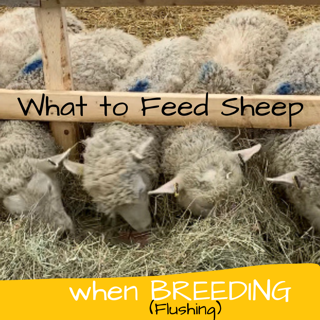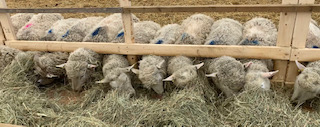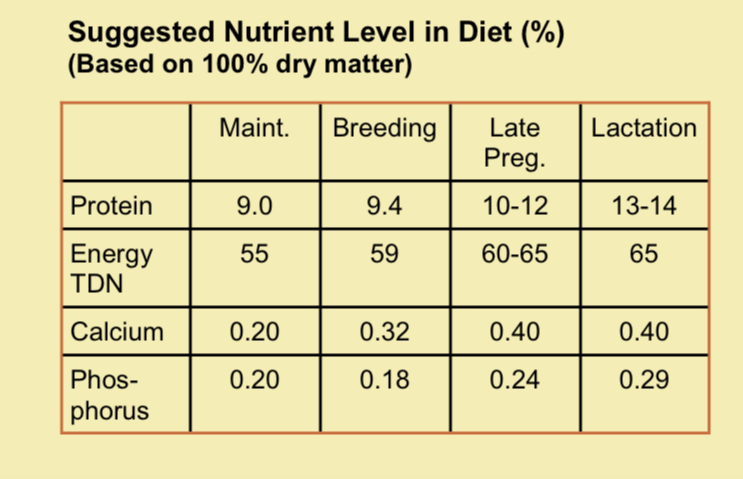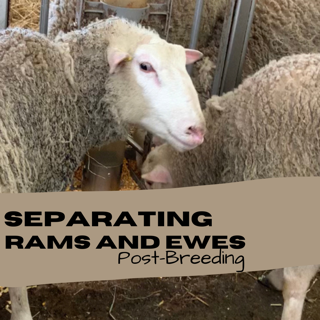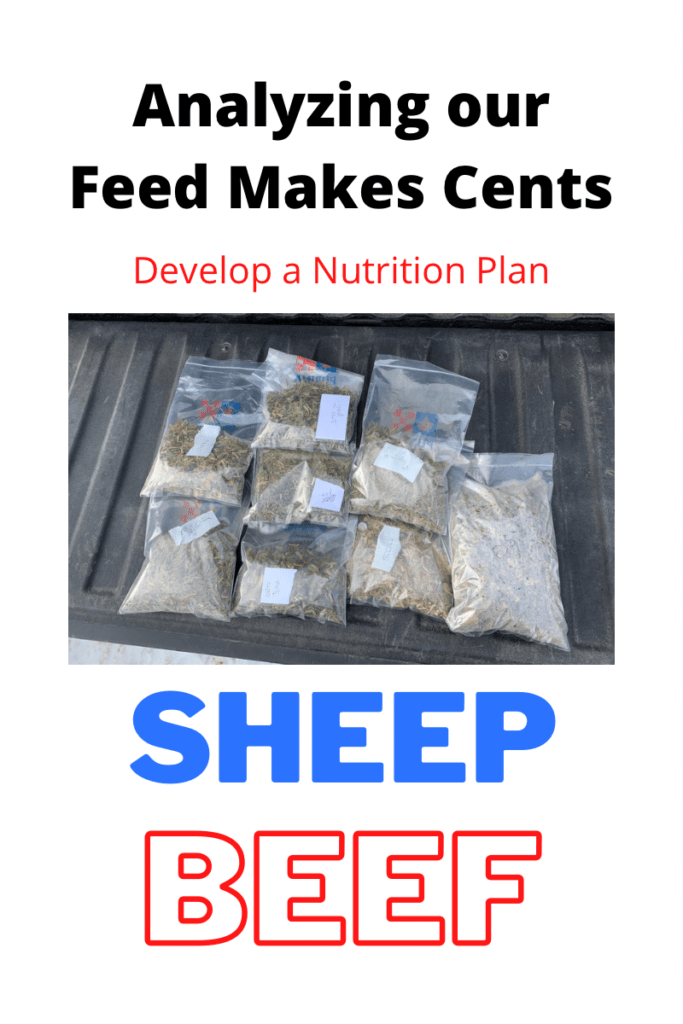How to Successfully Feed Ewes For Breeding
What we feed ewes for successful breeding begins one month before the rams join the ewes. This is a key management aspect that is critical as part of the breeding preparations otherwise known as FLUSHING. What we feed ewes before breeding increases our ability to produce more lambs born per ewe.
As a sheep farmer, our goal is to produce lambs to sell. To accomplish this goal, we focus on our ability to influence ewes to produce twins to increase revenues. We increase the energy in the ewe ration and begin one month prior to introducing the rams to the ewes.
How to Increase the Ewe’s Body Condition?
With increased dietary energy, the ewe will begin to increase body condition. This will then signal the ewe’s body that she will be capable of supporting more than one lamb. In turn, this will increase her ovulation rate, which should result in a higher lambing percentage, or more lambs born per ewe. [1]
How Much Feed do the Ewes Need to Eat for Successful Breeding?
Energy can be increased in the ration by adding grain at a rate of one-half to one pound per ewe per day. We, as many other producers, feed corn as the grain source; while others prefer a mixed grain formulation. The total amount of grain fed should be adjusted based on the body condition of the ewes. [1] Meaning if there are ewes that look too skinny, we may need to feed them a bit more to increase in comparison to the rest of the flock.
Additionally, Feed Impacts the Rams
Rams will also benefit from the additional energy in the ration because it helps them lose less weight during the breeding season. Plus, the added energy helps the rams maintain their vigor for breeding. [1]
How Long to Feed Grain to Sheep that are Breeding
Flushing should not be continued too long after the breeding season, as an extended period of high feeding is unnecessarily costly, and provides no improvements in ewe performance and productivity over a maintenance level feeding program. [2]
The additional energy in the ration should be fed throughout the breeding season and continue until a few weeks after the ram is removed. [1] We continue feeding corn to ewes 2 weeks after the rams are removed. Then, we alter our feed program focusing on the next stage being, early gestation.
How to Increase Odds of Twin Lambs
The reason for carrying the plane of nutrition on after breeding is to decrease embryonic death loss. The extra feed ensures the fertilized eggs have a much better chance of attaching to the uterus wall. Rather than being reabsorbed due to lack of energy from the ewe. [1]
The Importance of What to Feed Sheep
The period from weaning to breeding of ewes is critical if a high twinning rate is desired. Ewes should not be allowed to become excessively fat however they should make daily gains from weaning to breeding. [4]
Rations should provide adequate energy, protein, vitamins and minerals. Typically, good quality pasture and a good quality mineral mix provide sufficient nutrients to support the pregnancy. [1]
As breeding season continues, be sure to assess body condition scores of ewes and rams. Make sure they receive adequate nutrition to support a body condition score of 3 or provide additional nutrients in the ration to improve body condition scores. The ultimate goal is for ewes to consume a ration that will promote ovulation rates to conceive twins, support embryo survival and result in a healthy set of twins. All of these steps taken prior to the breeding season can lead to a more successful lambing season. [1]
In summary,
We have learned that if we gain the knowledge of what we are feeding the sheep flock during the breeding cycle; we can influence their overall body condition. By doing this; the ewe increases her ability to release more eggs which in turn, increases the odds of her producing twins.
First; the hay analysis completed by the nutitionist provides the knowledge on what we are feeding. Second; a feed plan can then be developed. Which results in knowing that the ewe’s nutritional needs are being met during this part of her production cycle. These become the tools needed that contribute towards how we feed ewes for successful breeding.
Feed Ewes for Successful Breeding!
Catch a glimpse into our sheep operation and see what’s working for us.
Sources:
- [1] https://extension.psu.edu/breeding-season-preparations-for-sheep-flocks
- Flushing [2] http://www.omafra.gov.on.ca/english/livestock/sheep/facts/02-055.htm
- [3] http://www.omafra.gov.on.ca/english/livestock/sheep/facts/eweflock.htm
- [4] https://www.merckvetmanual.com/management-and-nutrition/nutrition-sheep/feeding-practices-in-sheep
- [5] https://www.sksheep.com/documents/Ex_Nutrition_FS.pdf

